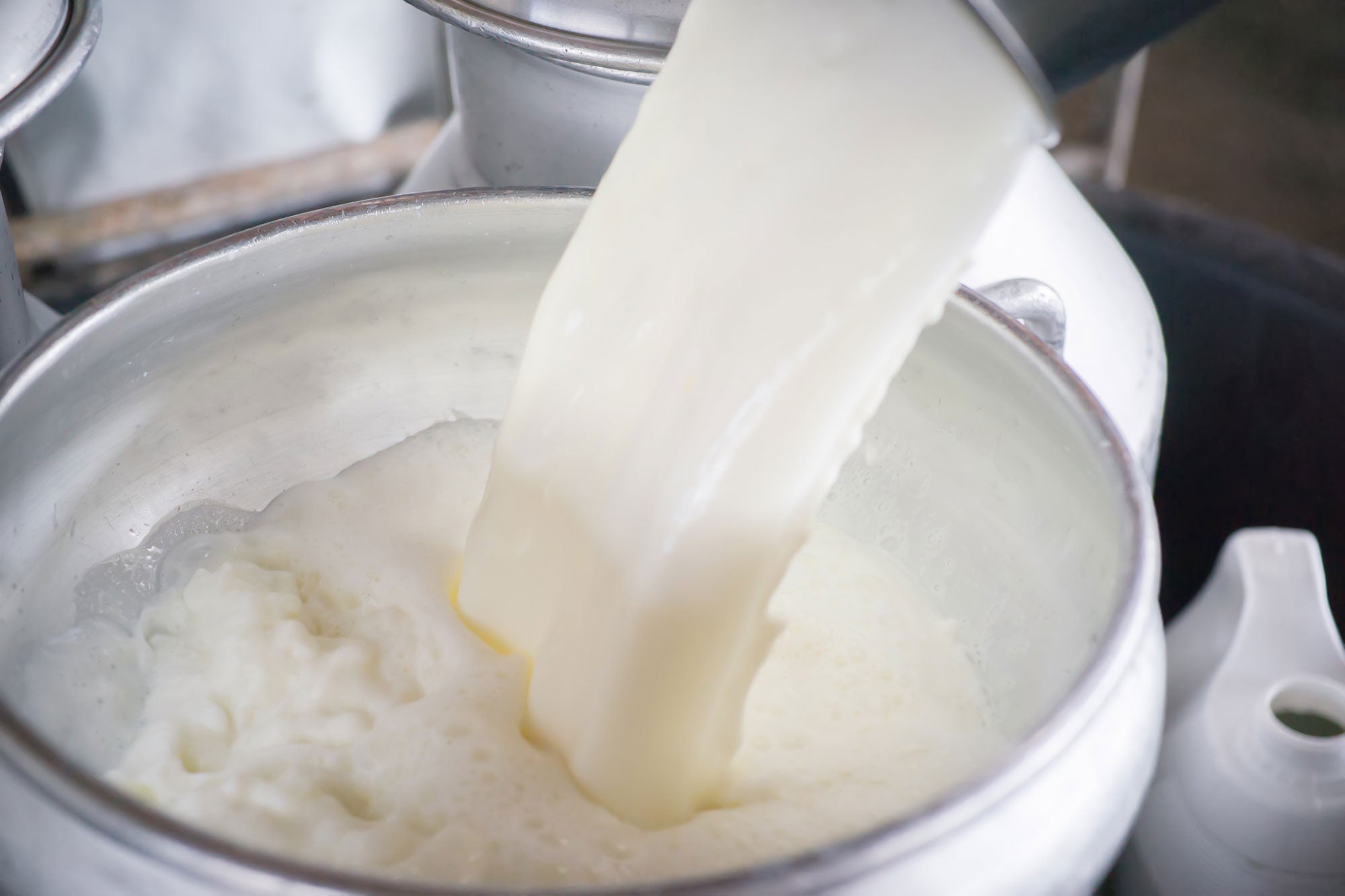Norwegian soccer star Erling Haaland has gone viral in recent days for posting a video to his YouTube channel that depicts a day in his life — including his affinity for raw milk. While the eccentric athlete wouldn’t cause much of a stir by talking about his red light therapy for muscle repair, ice baths, and saunas, his take on raw milk and using it regularly in his coffee, has gotten people talking.
If you’re not based in Europe or you’re not a soccer fan, you’d probably be forgiven for not being familiar with Haaland. The Norway native plays as a striker for Premier League club Manchester City and for the Norwegian national team; he is known as a potent and reliable scorer. It would be of little surprise to hear that fans of this sport could latch onto the things he says and find value in them, as people often do with professional athletes and celebrities.
Yet most food safety experts would say that raw milk is typically going to be risky to consume, even if politicians like Health and Human Services Robert F. Kennedy Jr. and Texas Agricultural Commissioner Sid Miller have voiced support for the product, in some cases referencing its supposed “healing powers.” Generally, they argue that it should be up to customers to decide on their own tolerance to balance any risks and perceived rewards.
“These days, raw milk has seen a resurgence in popularity among those seeking pure sources of nutrition, something we dearly lack in our daily lives,” Miller said in an op-ed published on AGDAILY and elsewhere. “Raw milk isn’t for everyone, but that doesn’t mean it shouldn’t be available. Just as we shouldn’t force people to consume something they don’t want, the government should allow people the right to choose what is best for their personal nutrition.”

“Raw milk” is called that because doesn’t go through the pasteurization process, which heats up the liquid to a temperature to kill most pathogens before quickly cooling it. The Food and Drug Administration has long concluded that “there is no meaningful difference in nutrition between pasteurized and raw milk.” In fact, the real difference is that raw milk has a much higher chance of carrying pathogens that can land people in the ER.
The hospitalization rate for patients in outbreaks linked to raw milk has been found to be 13 times higher than the rate for people in outbreaks linked to pasteurized milk, according to the Centers for Disease Control and Prevention. This is partly due to the fact that the outbreaks due to raw milk were caused by bacterial infections, which are typically much more severe than the mild viral infections that were common causes of the outbreaks linked to pasteurized milk.
Despite everything we know about the dangers of raw milk, some people can’t resist its appeal.
“Numerous sports men and women drink raw milk because of wide range of health and nutritional benefits,” said Steve Hook, a UK dairy farmer whose operation produces 95,000 gallons of raw milk every year. He is an advocate for Haaland’s adoption of raw milk in his daily diet. “Raw milk is fantastic for muscle repair and growth, and protection against infection, amongst many other benefits.”
Haaland’s video had more than 5.5 million videos in its first week on YouTube, which is particularly notable because it’s the first full-length video he has posted. (The other eight videos he has up are Shorts.)
Most dairy farmers who we’ve talked with on the topic of raw milk said they may be willing to drink raw milk from their own farms, but then are quick to add that they wouldn’t drink it from any one else’s operation, even if it’s even a trusted neighbor. Their rationale? They are accustomed to the bacteria and pathogens that are on their own property and have likely built a bit of durability against those that would mostly likely contaminate their own cow’s milk. But by going elsewhere, they say they don’t feel they have the same kind of biological protections.
Imagine that concern multiplied among folks who have little to no regular exposure to farms (or even dirt and other contaminants from the outdoors), and it becomes more clear why raw milk sparks so much concern if it were to become readily accessible.


